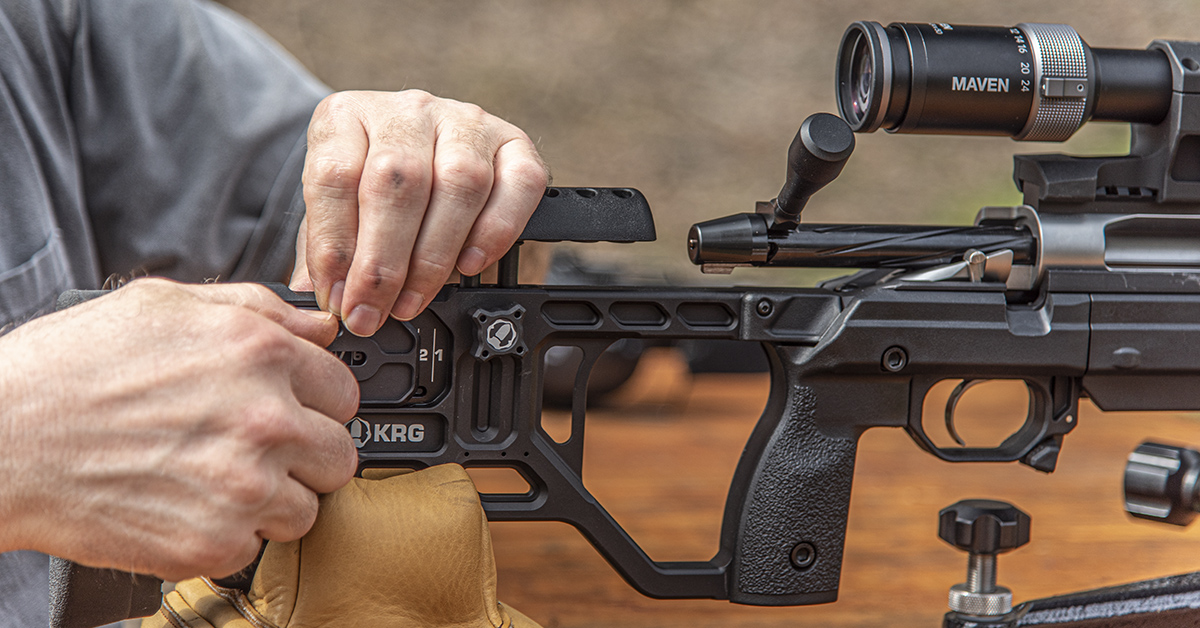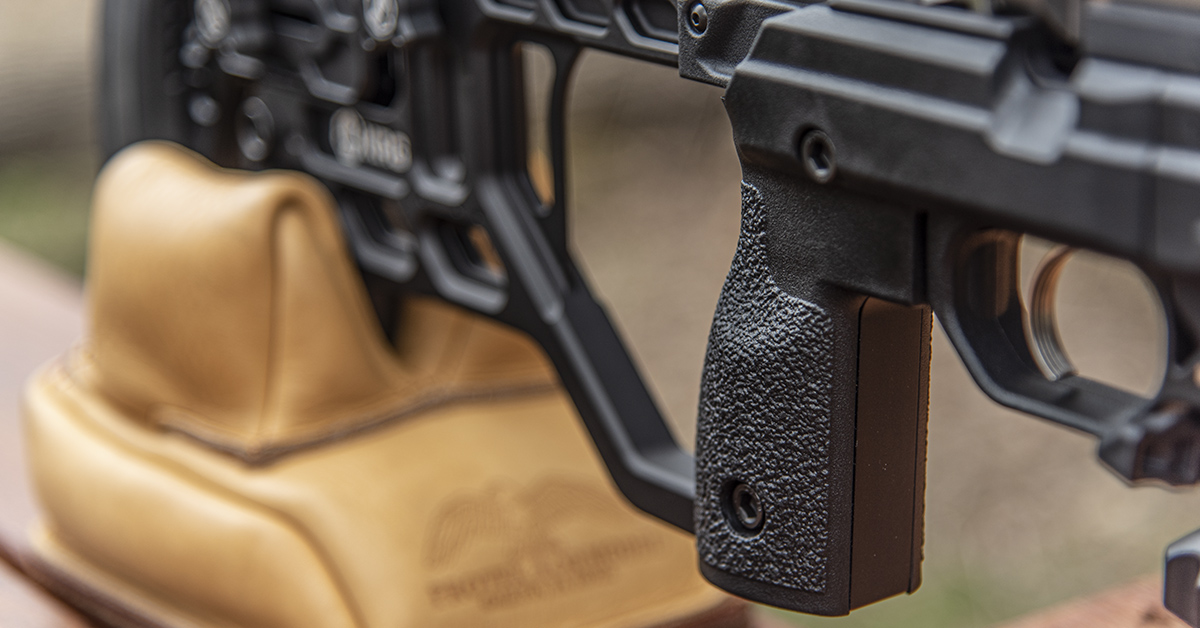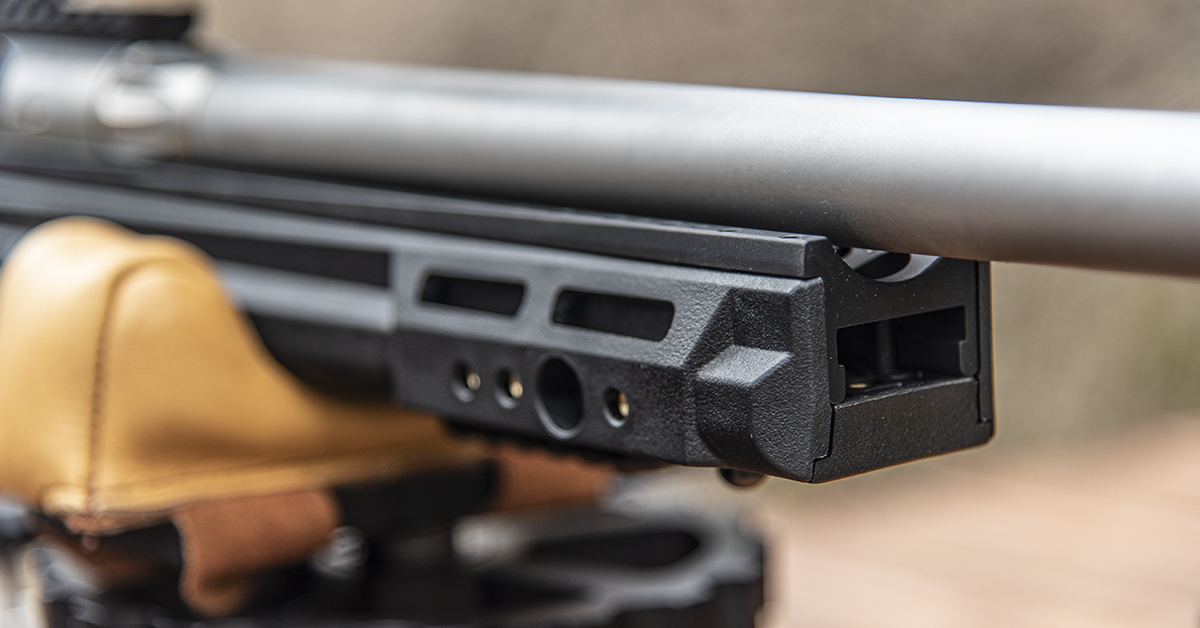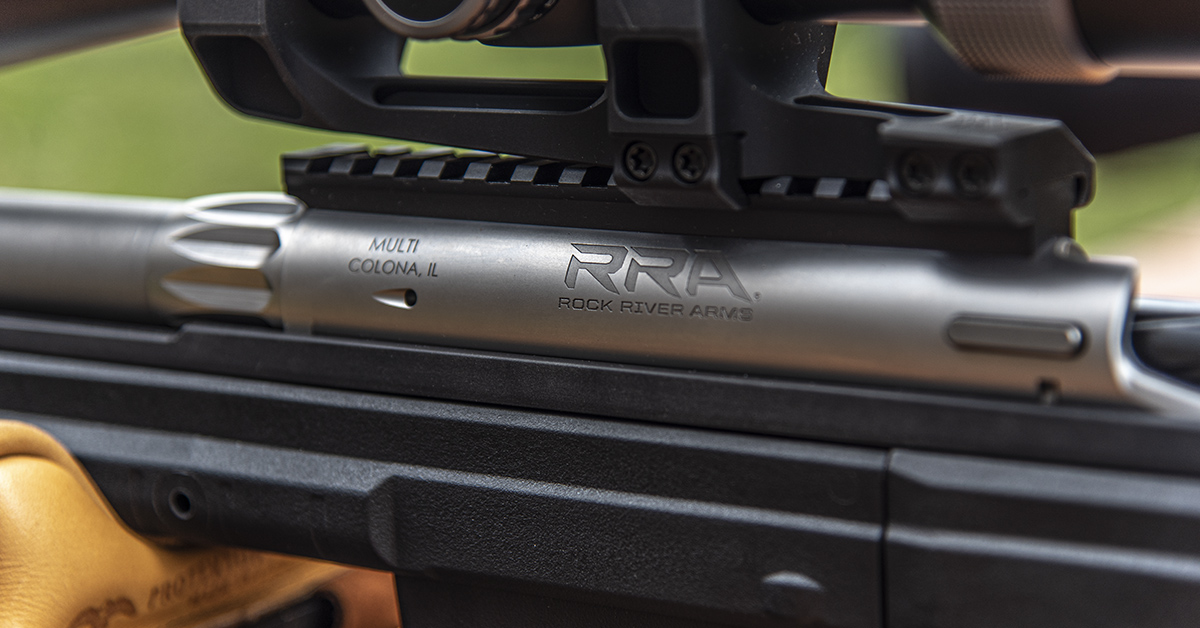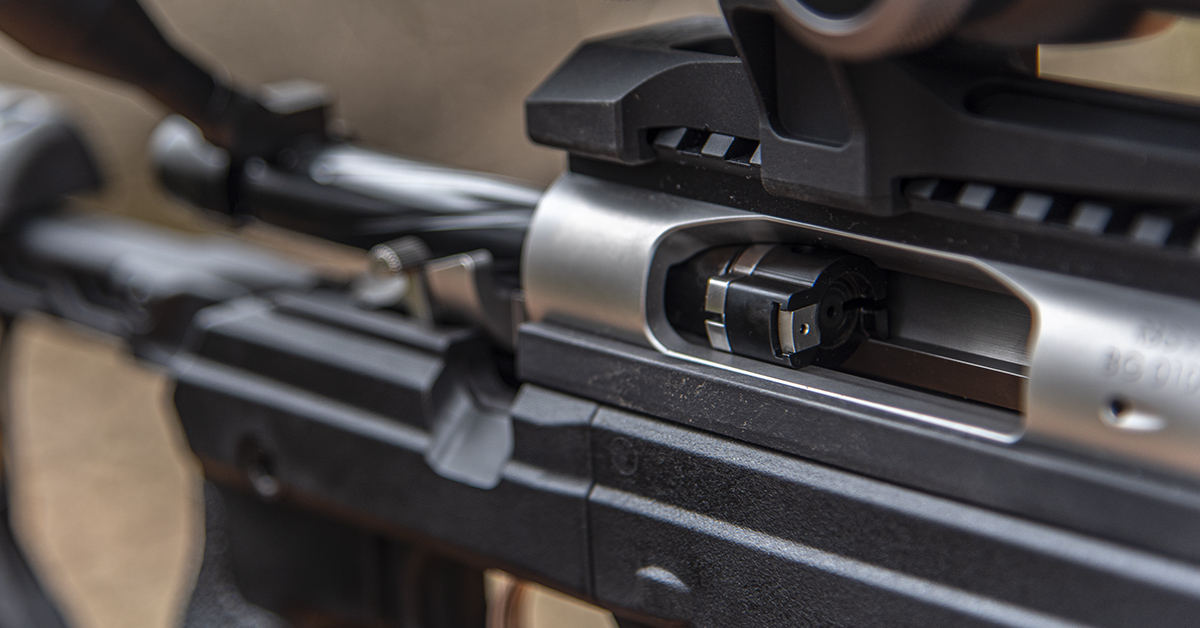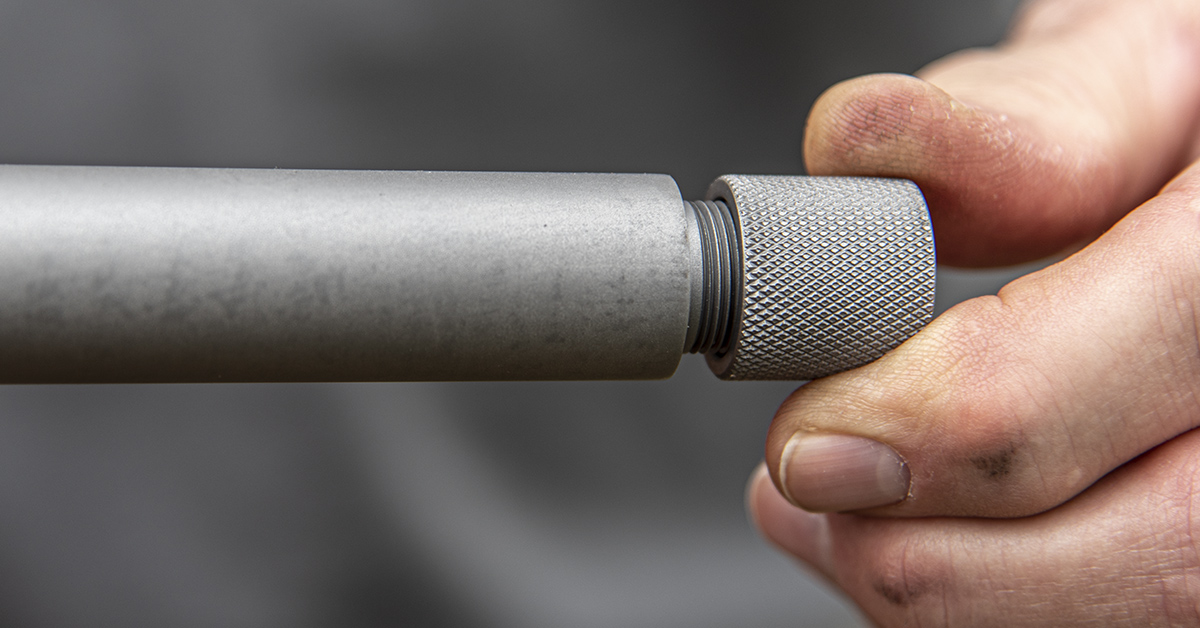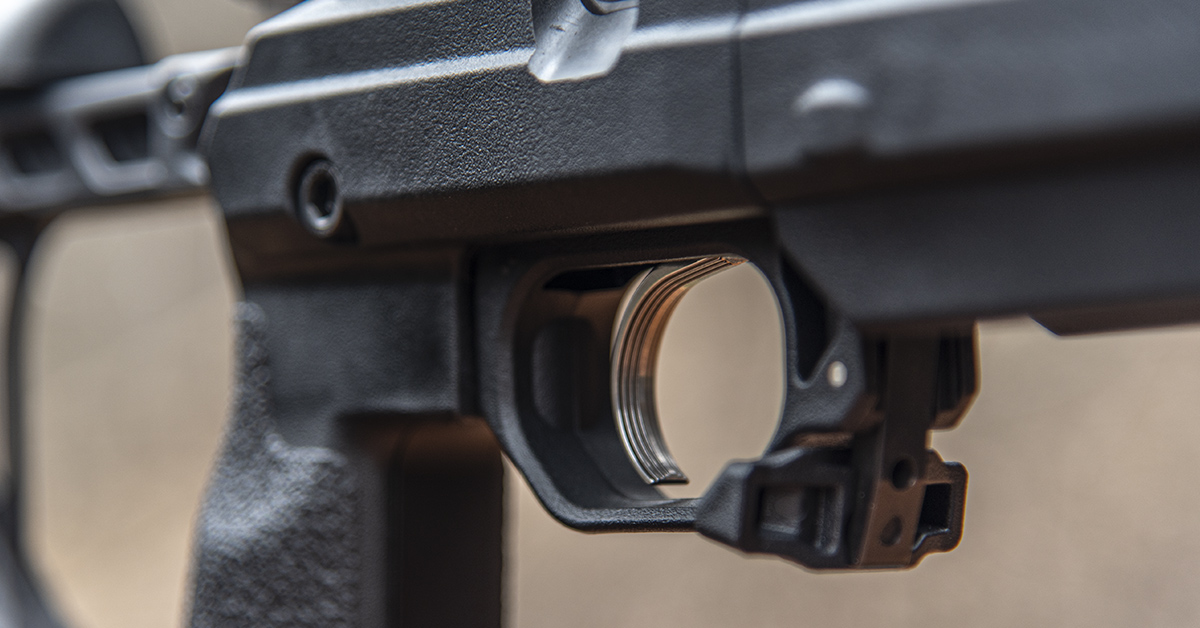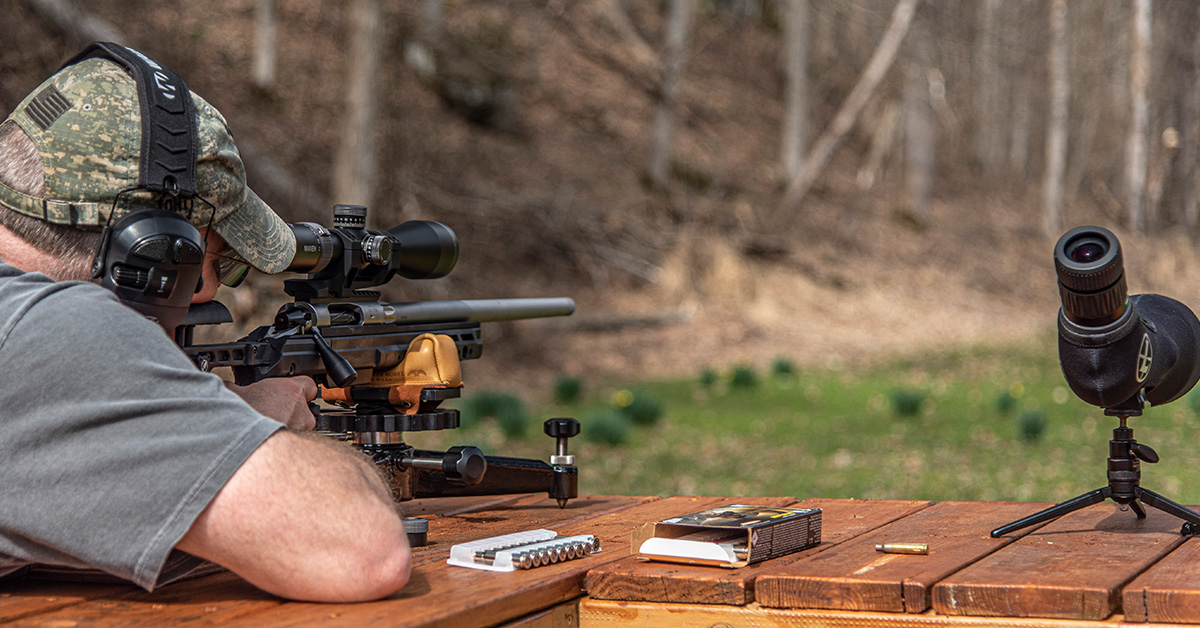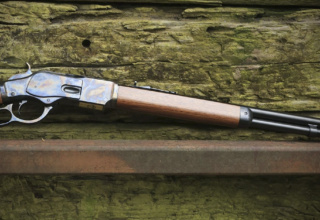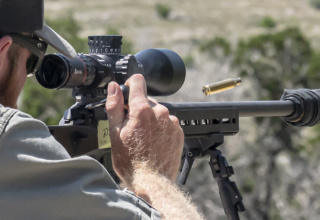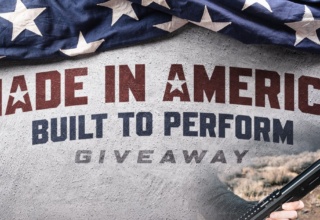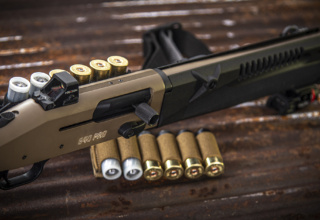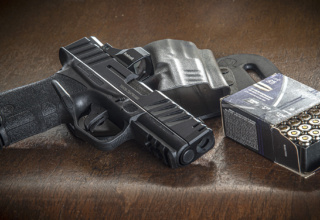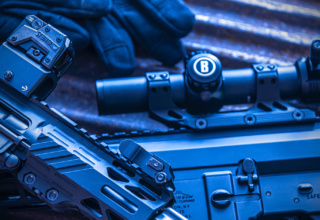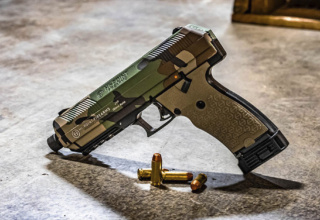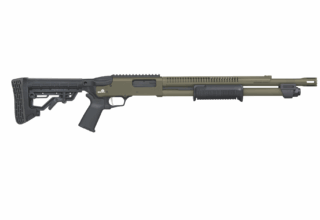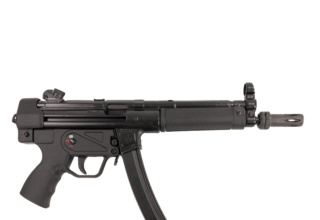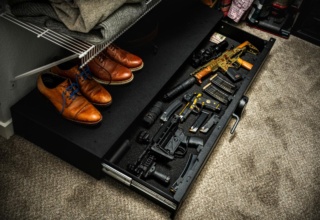Like the notion of a turn-key factory hot rod? Then cast your gaze on the RBG-1S from Rock River Arms.
by Rob Reaser
Those of you who are dedicated gear heads understand that nothing can replace the satisfaction of turning a [insert favorite musclecar or 4WD] into a boulevard screamer or a rock-humping, mud-blasting trail terror with your own hands and ingenuity. The late nights, broken bolts, busted knuckles, sweat, swears, and tools thrown against the walls are all part of the…uh…fun and experience and totally worth the effort (if you don’t consider the damage to your checking account). The same is true for the DIY firearm enthusiast. Putting your own mark on a high-performance gun offers a perpetually flowing font of gratification.
But as much as we get out of doing it ourselves, whether in the garage or at the gun bench, sometimes it’s nice just to trade cash for keys and go racing — let someone else do the heavy lifting for a change.
The folks at Rock River Arms thought the same thing when they developed their latest series of high-end long guns. Given the continual rise in interest and participation in long-range shooting and welcoming competition such as the Precision Rifle Series, it made sense that a company long known for their competition-grade 1911 pistols and high-quality AR-15 rifles should eventually step into the precision bolt rifle space. That’s exactly what the Colona, Illinois-based company did.
Working with leading specialists in the precision shooting industry, the RRA team imagined a long-range platform that, from muzzle to butt pad, made proven, practical sense for a factory production rifle suitable for top-end performance in any venue. The result was the Rock River Arms RBG-1S.
In keeping with modern convention, the RBG-1S is based on the increasingly popular chassis rifle system. While the chassis system offers no accuracy advantage over a traditional rifle stock designed for precision shooting, it is an ideal base for a factory production rifle. Simply mate the chassis to the barreled action via two action screws and the rifle is ready to go. A rifle stock, on the other hand, typically demands bedding work to fully support the action, and consideration must be given to bottom metal and feeding demands — all of which ramp up labor and material costs and simply are not practical for most production firearms.
For the RBG-1S, RRA selected the Whiskey 3 chassis from Kinetic Research Group (KRG). This is a proven chassis system that offers a full range of adjustability in length of pull, cheek riser height, cheek riser fore/aft positioning, and butt pad vertical positioning.
Easy-grip knobs allow you to adjust with no tools required. This is ideal for transitioning between multiple shooting positions, if needed.
This stock features a modular grip design. Two grip panels are included — one medium and one large set — allowing further adjustment for an ideal fit. The profile is vertical, encouraging a controlled, straight-back pull on the trigger.
Part of the reason for chassis popularity is not only its easy, ergonomic adaptability but also its compatibility with needful accessories or support systems. Integrated rail systems, such as for mounting a bipod, and QD sling swivel pockets (as seen on the KRG chassis), help expand functionality across changing shooting scenarios.
We found the RBG-1S chassis a pleasure to work with. The ergonomic fit combined with the slim buttstock and vertical grip proved comfortable and the rigid aluminum construction blended with a cushy butt pad to soak up the .308 WIN recoil with ease.
Another accuracy assist is found up front. The flat bottom forend expertly nestles into a bag or ad hoc field rest, creating that much needed stability for taking those long shots.
The RBG-1S utilizes a proprietary receiver based on the Remington 700 short-action. It is machined from stainless steel and features an integrated recoil lug. RRA includes a 20 MOA Picatinny rail base to provide the necessary bullet drop/scope adjustment for those intending to send projectiles long distances.
Also included is an external bolt stop — a welcome upgrade to the original factory design.
You’ll note in these photos that the barrel secures to the receiver via a 12-point barrel nut and that the bolt is a floating head (two-piece design), not one-piece like a Remington-original bolt. This configuration is a nod to the needs of high-volume competitive shooters who tend to run through barrels far faster than the recreational shooter or who may want to switch out to a different caliber. The barrel nut system allows barrels to be quickly swapped out while ensuring proper headspace dimension and the two-piece bolt permits the bolt head to be changed to accept a different cartridge in the event of a barrel/caliber swap.
Fit and machining quality of the black nitride-finished bolt is top rate. It is exceptionally smooth to operate and exhibits all the hallmarks of close tolerances to the action with no binding or slop. The straight bolt handle has a 90-degree throw, and the large knob can be removed should you prefer a different style down the road.
The RBG-1S comes in 20-, 22-, or 24-inch barrel lengths and chambers in .308 WIN or 6.5 Creedmoor. All barrels are stainless steel Wilson units featuring a 1:10 twist rate. Cryo-treating stabilizes the molecular structure of the barrels to ensure temperature changes do not affect accuracy. The bores are also air-gauged to guarantee dimensional consistency and straightness. Each barrel comes with a 5/8-24 threaded muzzle and is hand-crowned.
The final human interface is the trigger. Here, RRA selected a precision system from Triggertech. This is a single-stage trigger with sub-.015-inch overtravel and an adjustable pull weight range of 1 to 3.5 pounds. As tested in our RBG-1S, it felt exquisite, with minimal travel and a break any discerning shooter would be willing to pay good money for. Our test model showed an average pull weight of 1 lb., 14.8 oz. — just enough for positive control but not so light as to be scary. Loved it!
So, did the RBG-1S live up to expectations where it counts? We’ll say, “Absolutely.”
Included with our gun was a proof target from Rock River Arms. It revealed a two-shot group of .301 inches at 100 meters. Ammo used by RRA for testing was Federal Gold Medal Sierra MatchKing boattail hollow point in 168-grain.
Since our factory ammo stash has dwindled down to frightening levels over the last two years, our options and ability to shoot volume for this test were sketchy. So, to shorten the distance while proving the capabilities of the RBG-1S, we reached for our last box of Federal Premium Berger Hybrid Hunter in 168-grain. The goal was to see if we could duplicate RRA’s .301-inch two-shot group in as few strings as possible.
After establishing zero with our Maven RS.5 scope, our first two-shot string measured .514 inches. Grin-inducing, for sure, but a tad short of RRA’s “Steve the Shooter” (Steve was the name of the proof target shooter). Shifting to a fresh target, the next two-shot group looked, through our Leupold SX-5 Santiam spotting scope, as if we might have caught up with Steve. The caliper proved something even better — we bested Steve by .051 inches with a .250-inch group. This was, again, using four-year-old factory box ammo we had on hand. That spoke volumes for both Federal’s loads and for the premium construction of the Rock River Arms RBG-1S.
“Out-of-the-box” for both rifle and ammo.
That’s what you call turn-key factory hot rod performance.
Rock River Arms RBG-1S (#RBG308A10420C)
- Caliber: .308/7.62x51mm
- Action: bolt, proprietary short-action
- Barrel: Wilson stainless steel, cryo-treated
- Barrel Length: 22 inches
- Twist: 1:10
- Bolt: floating head, straight handle
- Bolt Throw: 90-degree
- Chassis: KRG Whiskey 3
- Trigger: Triggertech single-stage
- Optic Mount: 20 MOA base Picatinny rail
- Magazine: detachable box, AICS/Magpul compatible
- Accuracy: sub-MOA
- MSRP: $4,450


